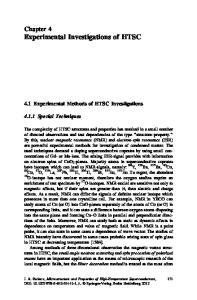Thermodynamic and Experimental Investigations of High-Temperature Refractory Corrosion by Molten Slags
- PDF / 6,689,422 Bytes
- 13 Pages / 593.972 x 792 pts Page_size
- 109 Downloads / 383 Views
UCTION
THE corrosion of refractory materials in pyrometallurgical operations by molten metal or slag is a major concern for furnace operators as refractory wear or failure inevitably results in reduced production efficiency and furnace shutdowns. Hence, the aim is to select adequate furnace linings for the individual process to provide homogeneous wear and predictable refractory life for scheduled maintenance and high furnace availability. Taking this fact into account and in order to improve the ferroalloy processes along the production route, continuous optimization of refractory materials, which are a decisive factor for furnace performance, is inevitable. Adequate refractory linings have to be chosen in order to guarantee safe furnace operation and satisfactory furnace lifetime with short downtimes for repairs. In order to consider all these aspects, holistic refractory solutions are required to improve the understanding of corrosion mechanisms and process challenges. Currently, ceramic magnesia refractory bricks are commonly used in ferroalloy smelting furnaces because of their high melting point, good mechanical properties at elevated temperatures, and ability to withstand hostile process conditions. CHRISTOPH WAGNER, CHRISTINE WENZL, DEAN GREGUREK, and DANIEL KREUZER are with RHI AG, 1100, Vienna, Austria. Contact e-mail: [email protected] STEFAN LUIDOLD and HOLGER SCHNIDERITSCH are with the University of Leoben, 8700, Leoben, Austria. Manuscript submitted December 31, 2015. Article published online December 1, 2016. METALLURGICAL AND MATERIALS TRANSACTIONS B
Refractory corrosion is caused by a combination of chemical attack and thermal and mechanical stresses. The chemical attack by molten slags in metallurgical processes plays a key role, being the most critical that must be considered in the design of industrial process equipment. A longer refractory life can be expected if no molten slag penetrates the refractory material. According Lee and Zhang,[1] the refractory corrosion process can be described with four stages: First is wetting, followed by penetration due to porosity, disruption of the refractory bonds by chemical reactions, and finally erosion of the refractory constituents by flowing liquids. Hence, the correct selection of refractories with high corrosion and erosion resistance is one of the critical requirements to overcome. The identification of the corrosion mechanisms are mostly performed using different lab scale experiments by means of some simplifications.[1,2] These lab scale tests combine measures and often cannot be discerned for basic analysis of a detailed course of attack. For understanding the actual corrosion mechanisms and drawing implications for improving the refractory performance and lifetime, an approach combining highly controlled lab tests, detailed microstructural/microanalytical investigations of samples, and theoretical modeling including thermodynamic phase equilibria calculations is needed. To describe the corrosion mechanisms and draw implications for improving t
Data Loading...










